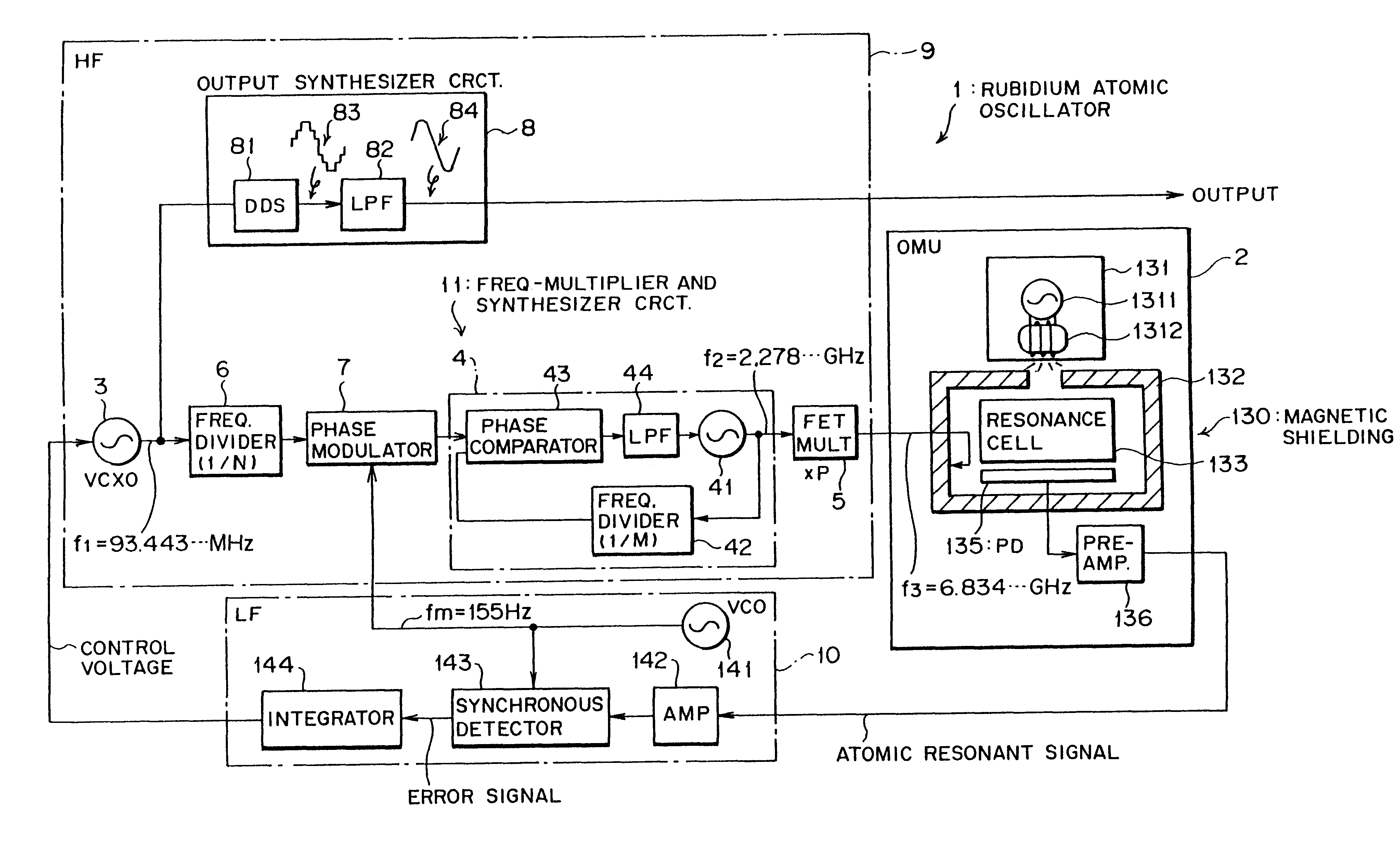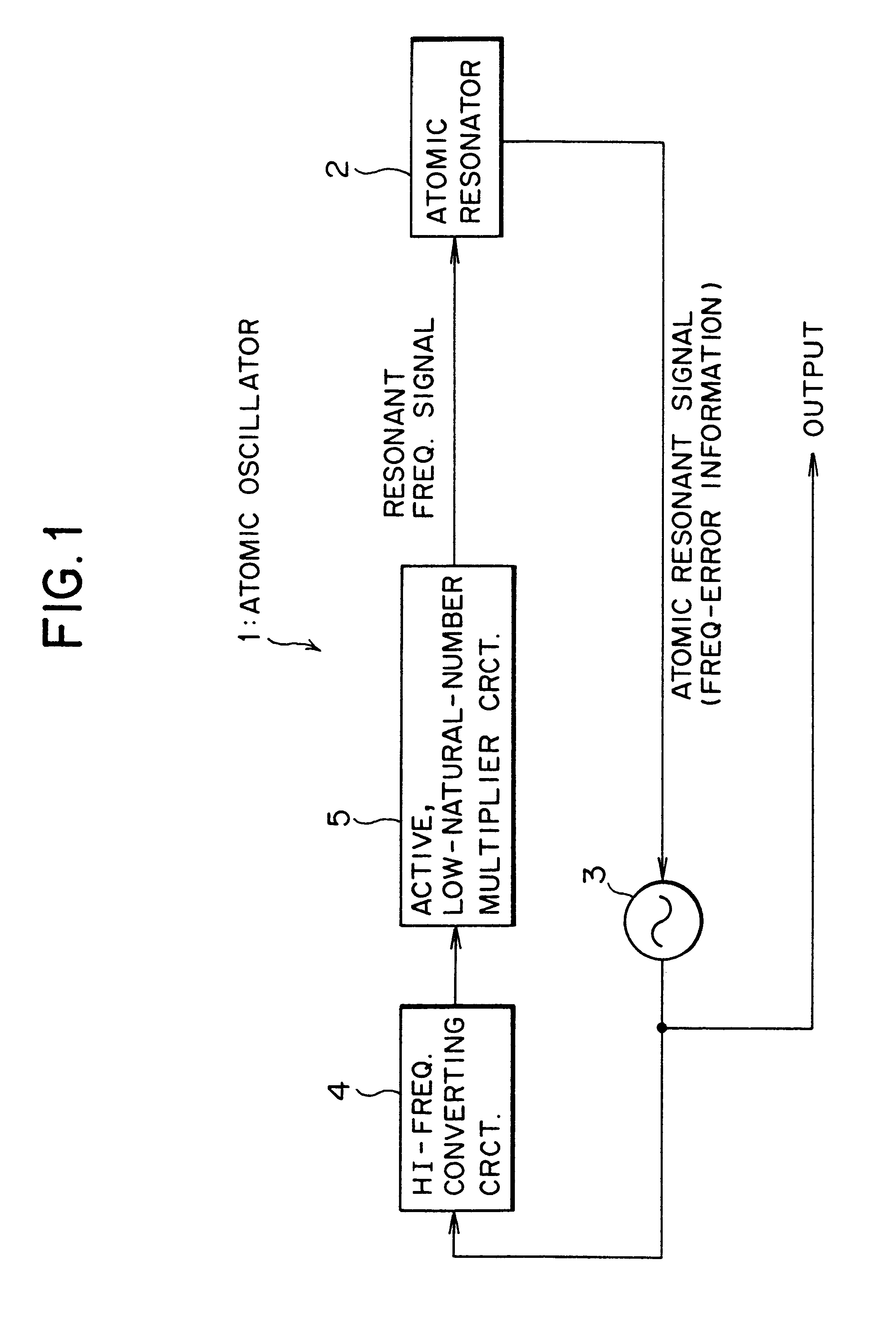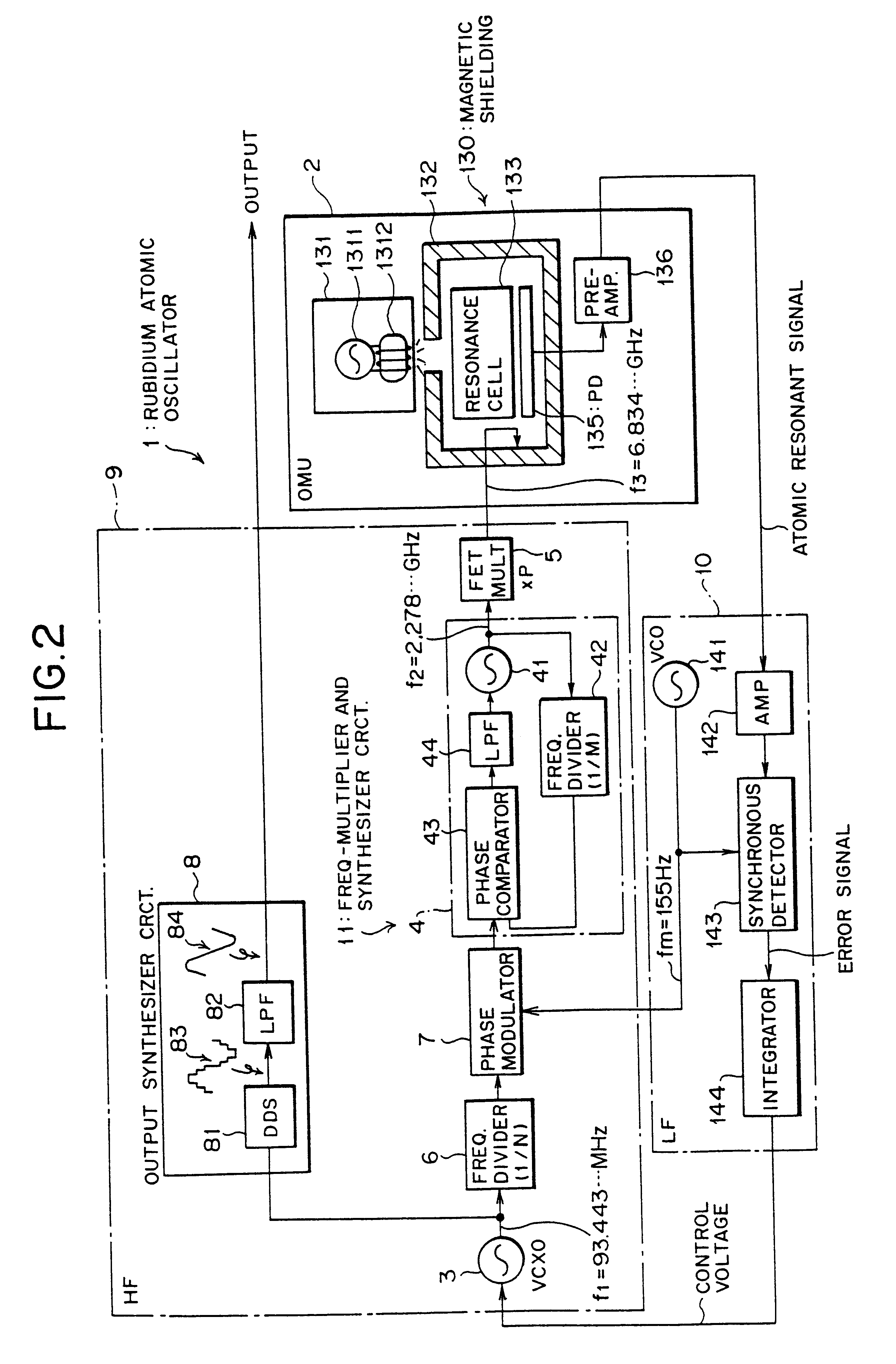Atomic oscillator utilizing a high frequency converting circuit and an active, low-integral-number multiplier
a high-frequency conversion circuit and low-integral-number multiplier technology, applied in the field ofatomic oscillators, can solve the problems of increased manufacturing cost, delay in manufacture term, and high cost of varactor diodes, and achieve the effect of improving the performance of atomic oscillators and stable low-frequency modulation signals
- Summary
- Abstract
- Description
- Claims
- Application Information
AI Technical Summary
Benefits of technology
Problems solved by technology
Method used
Image
Examples
Embodiment Construction
(A) Description of Aspect of the Invention
An aspect of the present invention will now be described with reference to the accompanying drawings.
FIG. 1 is a block diagram schematically showing the aspect of the present invention. As shown in FIG. 1, an atomic oscillator 1 of the present invention comprises an atomic resonator 2, a standard oscillator 3, a high-frequency converter circuit 4, and an active, low-natural-number multiplier circuit 5.
The atomic resonator 2 has a desired atom therein and outputs an atomic resonant signal carrying frequency-error information in response to a resonant frequency signal which causes the atom to resonate. The standard oscillator 3 produces an output frequency to be supplied to outside as the output of the atomic oscillator 1, controlling the output frequency in such a manner that the frequency-error information of the atomic resonant signal is minimal.
The high-frequency converter circuit 4 converts the output of the standard oscillator 3 into a h...
PUM
 Login to View More
Login to View More Abstract
Description
Claims
Application Information
 Login to View More
Login to View More - R&D
- Intellectual Property
- Life Sciences
- Materials
- Tech Scout
- Unparalleled Data Quality
- Higher Quality Content
- 60% Fewer Hallucinations
Browse by: Latest US Patents, China's latest patents, Technical Efficacy Thesaurus, Application Domain, Technology Topic, Popular Technical Reports.
© 2025 PatSnap. All rights reserved.Legal|Privacy policy|Modern Slavery Act Transparency Statement|Sitemap|About US| Contact US: help@patsnap.com



